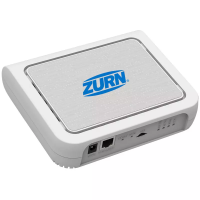11
PROCEPTOR
OWNER'S MANUAL
Samples should be taken from mid-liquid depth inside the Proceptor using an underwater grab sampler. Testing is generally
done through a laboratory that can check for ‘Total Oil and Grease’ or ‘Mineral Oil and Grease’ (for oil). Testing should be done
by a laboratory that is certified by your local municipality.
Test results under allowable limits:
If the test results indicate compliance with local bylaws — that's great! You can continue to be confident that your wastewater
complies with legislation limits and your business is environmentally responsible.
Test results above allowable limits:
If the test results indicate non-compliance with local bylaws:
1 Measure the solids and oil/grease depths in the unit.
2 If at or near capacity, pump out the Proceptor and refill with clean water.
3 Verify that the maximum flow rate does not exceed the Proceptor model design.
4 Evaluate facility standard operating procedures to confirm that best practices are enforced to reduce the quantity of
solids and contaminants entering the Proceptor.
4 Maintenance
4.1 EMPTYING AND SERVICING PROCEPTOR
Regular maintenance of a Proceptor unit is critical to ensure separation eciency is not compromised. The buildup of
floatables and solids within the separator reduces the water retention time and results in reduced separation eciency. If
contaminants are allowed to accumulate, maximum storage capacities may be exceeded, resulting in the loss of previously
captured oil, grease and solids. This may expose the Owner/Operator to unnecessary liability and/or higher sewer-use
surcharges.
Proceptor separators must be serviced by a vacuum or pumping truck. Liquid waste pump-out companies are a well-
established sector of the servicing industry. Costs to clean a Proceptor separator vary based on the unit size, geographic
area and transportation distances. Consult your local Waste Management Authority for an approved list of licensed liquid
waste handlers.
Find out the normal liquid volume or model number of your unit. Maintenance companies will require this information to quote
for service. Note: 1 Imperial Gallon = 1.2 US Gallon.
To service or maintain a Proceptor, the unit must be emptied completely. Once the tank is emptied, it should be rinsed
with water to remove any oil, grease of solids in the unit. If tools are necessary for complete removal of crusted grease or
solids, care should be taken not to damage internal PVC piping, baes and tank walls. For units with remote suction, it is
recommended to open, rinse and inspect at least annually.
Proceptor separators must be filled with clean water after cleaning the unit by running a tap that drains into the separator.
To determine approximately how long to run the tap, divide the tank volume in US gallons (USG) by 5 (USG per minute for a
typical tap). For example: 300 Gallon tank / 5 = 60 minutes. If you do not fill the tank with clean water after pumping out, your
operation will discharge unseparated waste from the separator on startup.

